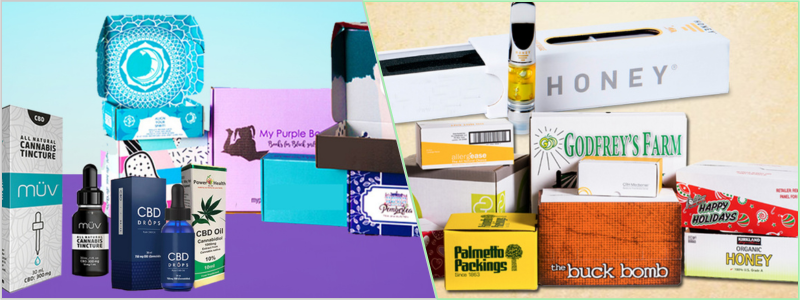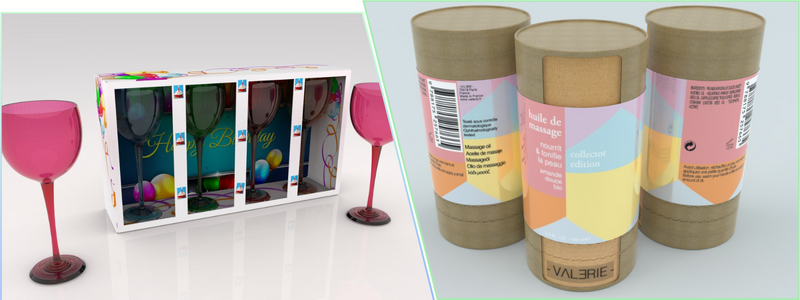This article covers the advantages of product label and packaging designs for companies and Amazon sellers. There have been many instances when buyers choose one product over another because it has informative labeling and more attractive packaging. Judging things only by appearance is not advised, but people care more about the first impression than they are willing to admit. No matter how good a product is, poorly designed packaging and rudimentary labels negatively impact sales. It is safe to say product packaging is as important as the product itself based on shopping experiences.
Much of brand awareness is also affected by packaging concept design services. Take Apple, for instance; the technology giant has demonstrated how to build a simple, functional box to carry a smartphone. The packaging of an iPhone is nothing but a plain box containing a user’s manual inside and the main product. It is nothing extraordinary, but the design exemplifies the phone’s most prominent characteristic: simple yet functional. The brand values are captured neatly in the form of a paper box.
RELATED: New product packaging design & why it’s important for product designers
Product packaging designs from well-known brands might not look like much, but choosing specific shapes and colors takes real effort. The same thing applies to product labeling. A company or a seller considers many things when deciding what information to include and how to word them properly so that people are impressed and inclined to spend money on the product.
 Table of contents
Table of contents
The practicality of product packaging design
Product packaging design holds a special place of importance in product packaging. But underneath the colorful illustrations and striking typography, it must also deliver some practical functionalities. Outstanding packaging designs should be able to provide the following functions:
- Protection: the principal objective of the packaging designer is to design packaging that protects the product it contains. Packaging has to keep the content safe from any damage or contamination during distribution and when it sits on a store shelf waiting to be purchased. Using solid and sturdy materials also prevents anybody from tampering with the product.
- Distinction: there can be many similar products in the market. Customers probably are unaware of the unique qualities of any particular product from a specific brand (in comparison with the alternatives) until they open and try it. Packaging helps a brand differentiate itself from its competitors.
RELATED: Top 20 packaging design blogs for freelance product designers
- Information: customers need to know many things about a product before making the purchase decision. For example, the packaging design of a food product has to carry information on the ingredients, expiration date, and cooking instructions.
- Attractions: distinction alone is not enough. It makes little sense to design unique packaging by deliberately making it unattractive. Good packaging makes the product noticeable in a positive fashion. When the packaging design company uses an intricate design and bold color schemes, it may encourage buyers to look closer.
Packaging design is more than an eye-catching component of a product. It is a multi-purpose practical tool to ensure the product arrives at store shelves in good condition and that consumers can use it confidently because they know what they buy.

RELATED: Sustainable packing design tips for new products at your firm
Branding
Branding can be defined as a name, symbol, or design representing a seller’s public image. A brand carries an identity and a reputation associated with the owner. It is also the distinctive mark that separates a product from anything else. On the other hand, “branding” refers to all sorts of activities carried out to create a brand and build an inseparable set of positive characteristics for it. It is part of a large-scale marketing strategy that aims to increase consumers’ awareness of what the brand offers, what values it represents, why its products are better than the rest, and how it can improve consumers’ lives. Product packaging design is an effective means of communication to spread those messages.
Packaging as part of the brand
Product packaging can be part of the brand itself. A prominent example of such an approach is the Coke bottle from Coca-Cola. The bottle’s curvy shape is a registered trademark; the design belongs to the company. If anybody markets a beverage packaged in a similar-looking bottle, Coca-Cola may have legal grounds to file a lawsuit. In other words, the person uses an integral part of someone else’s brand—even if the bottle has a different graphic design and name. There are several layers of product packaging design, and thankfully not all of them can be trademarked:
RELATED: Tips for cosmetics packaging design & development
- Primary layer: the primary layer is the packaging layer designed to hold a single product retail unit (i.e., a bag of potato chips or a can of beer). Retail stores often display their primary packaging for most products because they rarely cater to bulk purchases. The primary layer protects the product from tampering and is used as a branding tool. It carries general information about the company/manufacturer, the product’s ingredients or materials, what the product is for, and usage instructions. If a nutrition label and safety warning are necessary, they must be printed or attached to the primary layer. Some product design companies include extensive fine print on the product’s primary packaging, such as toys and electronics, while others take a minimalistic approach and use a separate brochure instead.
- Secondary layer: a pack of beer and a box of potato chips are examples of secondary layer packaging, typically containing a single wholesale (as opposed to retail) unit. It is mostly geared toward retailers or consumers who purchase in large quantities. The secondary layer seldom carries detailed information, such as nutrition labels or instructions, but it still bears logos or brand names. The secondary layer functions to protect the product during shipping.
- Tertiary layer: explicitly designed for bulk distribution and shipment, the tertiary packaging is often made of sturdy materials, such as wooden crates and pallets with elastic bands. Most customers never see the tertiary packaging as it is opened in wholesalers’ warehouses. There is almost no distinctive branding at all, and it holds little information beyond gross weight, storage facility, SKU, item quantity, and manufacturer.
Only the primary and secondary layers of packaging can be patented – design patented services can assist you with this. To some extent, the secondary layer can be quite distinctive, as in the case of some beverage products, and it protects the product’s appearance.
RELATED: 20 Minimalistic packaging design concepts for products
Why is product labeling important?
Labels are printed on the primary layer. Product label comes in two different categories:
- Principal: the label with high-quality graphics is put on the front side of the product. A principal label is mainly for branding purposes, although it may also carry hints about the product’s intended use. For example, over-the-counter (OTC) drugs must clearly provide safety warnings and indications of use in a place where a buyer can see them at a glance. There might even be an additional brochure to inform buyers about potential side effects and proper dosage.
- Supplemental: placed on the back of the primary packaging, supplemental product labeling contains more detailed information. The term “supplemental” might not be the most appropriate here because—thanks to minimum branding—it can hold dense information. Everything a buyer needs to know about a product can be found on the backside. For instance, the supplemental labels of electronic toys, foods, masks, and even toiletries always give more details about the products. The information provided on the front side is often restated with further explanation.
RELATED: New packaging design costs, 3D modeling rates & services pricing for companies
The principal label is essential to the seller for branding purposes, and the supplemental one is crucial to deliver information to buyers. Just like the primary packaging itself, labels can be creatively unique. Product labeling is a form of marketing in itself. It helps consumers pick something they need, educate them on how to practice safe usage, and tells them about the proper disposal of a product.

Boost sales on Amazon with new packaging design
Amazon, the ultimate online retailer, greatly influences people’s purchase decisions. On every product page, the website offers recommendations based on an individual user’s activity history, including past purchases and search queries. The platform is vastly popular, with more than 2 billion visitors per month. Sellers on Amazon are spoiled with intensive online exposure and potential sales, but at the same time, they have to deal with fierce competition. Custom product packaging design services also fall within these parameters, as they experience the impact of Amazon’s extensive reach and face intense competition.
To say that Amazon’s search results page is competitive would be a gross underestimation. Products that rank on the first page generate up to 80% of the sales, while those on the second and third pages contribute about 10% to the total transaction count. One of the most effective ways to improve ranks and attract buyers is by giving the products striking packaging and labeling designs. Amazon requires all products in the listing to be photographed against a white background.
RELATED: 12 Tips to create the best product packaging design
With the right combination of colors for the product category and informative labels, sellers indirectly position themselves in a good spot to achieve a better rank. Like in all online stores, buyers never have the chance to try the product before making a purchase. Buyers cannot touch any product, so an attractive packaging design is critical. Buyers will turn to the information on the packaging and labels to help make the purchase decision.
Consistency also matters – the image of a product and its packaging on the platform must be identical to the physical items buyers receive; digital images must translate well to print medium. Considering the number of sellers offering similar products, every Amazon seller must create a unique visual identity to attract buyers’ attention and increase brand awareness.
How Cad Crowd can assist
Need help with new packaging for your product? Learn more about how we can help you hire freelance industrial designers for CAD services on demand.
